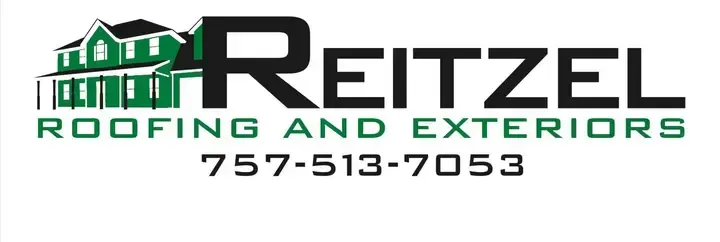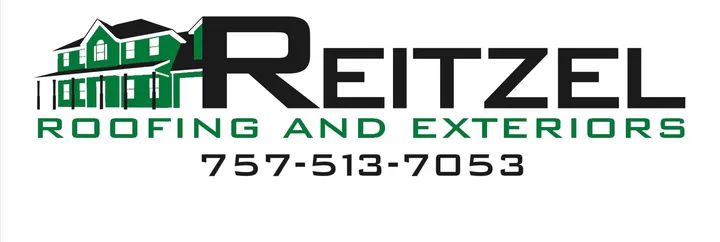LEARNING CENTER
CHECK OUT SOME OF OUR LATEST ARTICLES FROM IN OUR LEARNING CENTER

Covering History: A Journey Through Roofing Techniques
In the vast tapestry of architectural history, the evolution of roofing techniques stands as a testament to human ingenuity and cultural diversity. From the ancient shelters of our ancestors to the modern marvels of engineering, the story of roofing spans millennia and continents, shaped by tradition, innovation, and cultural influences. Let's embark on a journey through time to explore the rich history of roofing techniques and the remarkable legacy they leave behind.
Ancient Roofs: The Foundations of Shelter
In the earliest chapters of roofing history, our ancestors relied on natural materials and simple techniques to create shelters against the elements. Thatched roofs, crafted from reeds, grasses, or straw, provided insulation and protection from rain and sun. These traditional roofing methods were widespread across cultures and continents, from the thatched cottages of Europe to the mud-brick homes of ancient Mesopotamia.
As civilizations flourished, so too did their architectural achievements. In ancient Egypt, massive stone structures were crowned with flat roofs, while in China, curved tiles became synonymous with imperial architecture. Each region developed roofing techniques suited to its climate, resources, and cultural preferences, leaving behind a diverse legacy of ancient roofs that still captivates us today.
The Evolution of Roofing: Innovation and Adaptation
As societies advanced and trade routes expanded, so too did the exchange of ideas and technologies. The evolution of roofing techniques accelerated, fueled by innovations in engineering, materials, and craftsmanship. In medieval Europe, timber-framed structures gave rise to the iconic pitched roofs, often covered in thatch, wood shingles, or clay tiles. These traditional roofing methods not only provided shelter but also became symbols of status and craftsmanship.
The Renaissance witnessed a resurgence of classical architecture, inspiring grand domes and vaults adorned with ornate roofing details. Meanwhile, in Japan, intricate wooden joinery techniques produced elegant pagoda roofs that defied gravity. Across continents, cultural influences continued to shape roofing styles, from the terracotta roofs of Mediterranean villas to the intricately carved gables of Nordic stave churches.
Cultural Influences: Roofing as a Reflection of Identity
Roofing techniques not only served functional purposes but also carried profound cultural significance, reflecting the values, beliefs, and identity of communities. In indigenous cultures around the world, traditional roofing materials such as palm leaves, bark, or animal hides were woven into architectural expressions of harmony with nature. In the Himalayas, Tibetan monasteries were crowned with intricately painted wooden roofs, blending religious symbolism with artistic craftsmanship.
Even in modern times, cultural influences continue to shape roofing trends and preferences. In the urban landscapes of cities like New York or Paris, historic preservation efforts ensure that traditional roofing materials such as slate or copper endure as symbols of architectural heritage. In contrast, innovative eco-friendly roofing solutions, such as green roofs or solar panels, reflect contemporary concerns for sustainability and energy efficiency.
Evolution of Roofs in Virginia: A Historical Perspective
Virginia, with its rich colonial history and diverse geography, has witnessed a fascinating evolution of roofing styles over the centuries. From humble beginnings to modern marvels, the story of roofs in Virginia is a testament to the ingenuity and craftsmanship of its people.
Colonial Era (1600s-1700s)
During the early colonial period, Virginian roofs were largely influenced by European settlers, particularly from England and Scotland. Wooden shingles, often hand-split and rough-hewn, were the primary roofing material. These rustic roofs were functional, yet prone to rot and fire damage.
As the colony grew, so did the use of more durable materials like cedar shakes and clay tiles. The latter, imported from Europe, became a status symbol among the wealthy planters. Thomas Jefferson's iconic Monticello, built in the late 18th century, features a distinctive tin roof, which was a rare and expensive material at the time.
Federal Period (1780s-1820s)
Following the American Revolution, Virginian architecture began to reflect the country's newfound independence. Federal-style buildings, characterized by balanced facades and classical details, emerged during this period. Roofs became more refined, with wider eaves and decorative cornices.
Slate roofs, imported from Wales and Pennsylvania, gained popularity among the elite. The University of Virginia's Rotunda, designed by Thomas Jefferson in 1819, boasts a stunning slate roof that has withstood the test of time.
Victorian Era (1830s-1900s)
The Industrial Revolution brought mass production techniques to Virginia, making roofing materials more accessible and affordable. This led to a proliferation of ornate Victorian-era roofs, featuring intricate patterns, turrets, and multi-colored slate tiles.
The introduction of asphalt shingles in the late 19th century provided a cheaper alternative to traditional materials. However, these early shingles were prone to cracking and weathering, leading to their eventual replacement by more durable options.
20th Century Developments
The early 20th century saw the rise of modern roofing materials like corrugated metal and built-up roofing (BUR). These innovations enabled faster construction and improved durability.
In the mid-20th century, Virginia experienced a surge in suburban development, leading to the widespread adoption of asphalt shingles as a cost-effective and low-maintenance option. Today, these shingles remain a popular choice for many Virginian homeowners.
Roofs Inspirations during Early Age:
Let's take a closer look at some of the most inspiring roof designs throughout history:
1. Ancient Greek Temples (500 BCE - 100 CE)
The iconic temples of ancient Greece, such as the Parthenon, featured pitched roofs with ornate decorations. These structures not only protected the buildings from the elements but also symbolized the power and grandeur of the gods.
Inspiration: The use of columns, arches, and ornate details can add a touch of classical elegance to modern roof designs.
2. Gothic Cathedrals (12th - 16th century)
Soaring vaulted ceilings and ribbed roofs characterized Gothic cathedrals like Notre Dame de Paris. These masterpieces of medieval architecture showcased the engineering prowess of their time.
Inspiration: The dramatic curves and pointed arches of Gothic roofs can inspire modern designs that incorporate similar elements for a sense of grandeur and drama.
3. Renaissance Palaces (15th - 17th century)
Renaissance palaces, such as Florence's Palazzo Pitti, featured flat roofs with ornate balustrades and decorative cornices. These designs emphasized symmetry and proportion.
Inspiration: The clean lines, balance, and harmony of Renaissance roofs can inform modern designs that prioritize simplicity and elegance.
4. Victorian-Era Mansions (19th century)
Victorian-era mansions, like those found in San Francisco's Haight-Ashbury neighborhood, boasted intricate, multi-colored slate roofs with turrets and gables.
Inspiration: The whimsical, eclectic nature of Victorian roofs can inspire modern designs that incorporate playful colors, patterns, and textures.
5. Modernist Masterpieces (20th century)
Le Corbusier's Chapel of Notre Dame du Haut in Ronchamp, France, features a bold, curvaceous roof that redefined modern architecture.
Inspiration: The innovative use of materials and forms in modernist roofs can inspire contemporary designs that push boundaries and challenge conventions.
As we've journeyed through the history of roofs in Virginia, it's clear that innovation has been a constant driving force behind the evolution of roofing techniques. From humble beginnings to modern marvels, the art of roofing has come a long way with Reitzel Exteriors.
Beyond their dedication to quality, Reitzel Exteriors distinguishes itself through its innovative approach to roofing. By staying abreast of the latest industry trends and advancements, they offer customers a wide range of options tailored to their specific needs and preferences. Join the innovative roofing revolution with Reitzel Exteriors. Experience the difference that quality, expertise, and dedication can make. Contact us today to schedule your consultation and take the first step towards a stronger, more resilient roof that will protect your home for generations to come.So, let us make your dream house come true and contact us through :
+1 757-513-7053

Our Services
Roof Repairs
Roof Leaks
Roof Storm Damage
Roof Replacement
Residential Roofing
Commercial Roofing
Siding
Trim
Windows
Fencing
Decks
Resources
Learning Center
Financing
Areas We Service
About Us
Contact Us
Privacy Policy
Copyright © 2022 Reitzel Roofing and Exteriors
All Rights Reserved
Our Services
Resources










